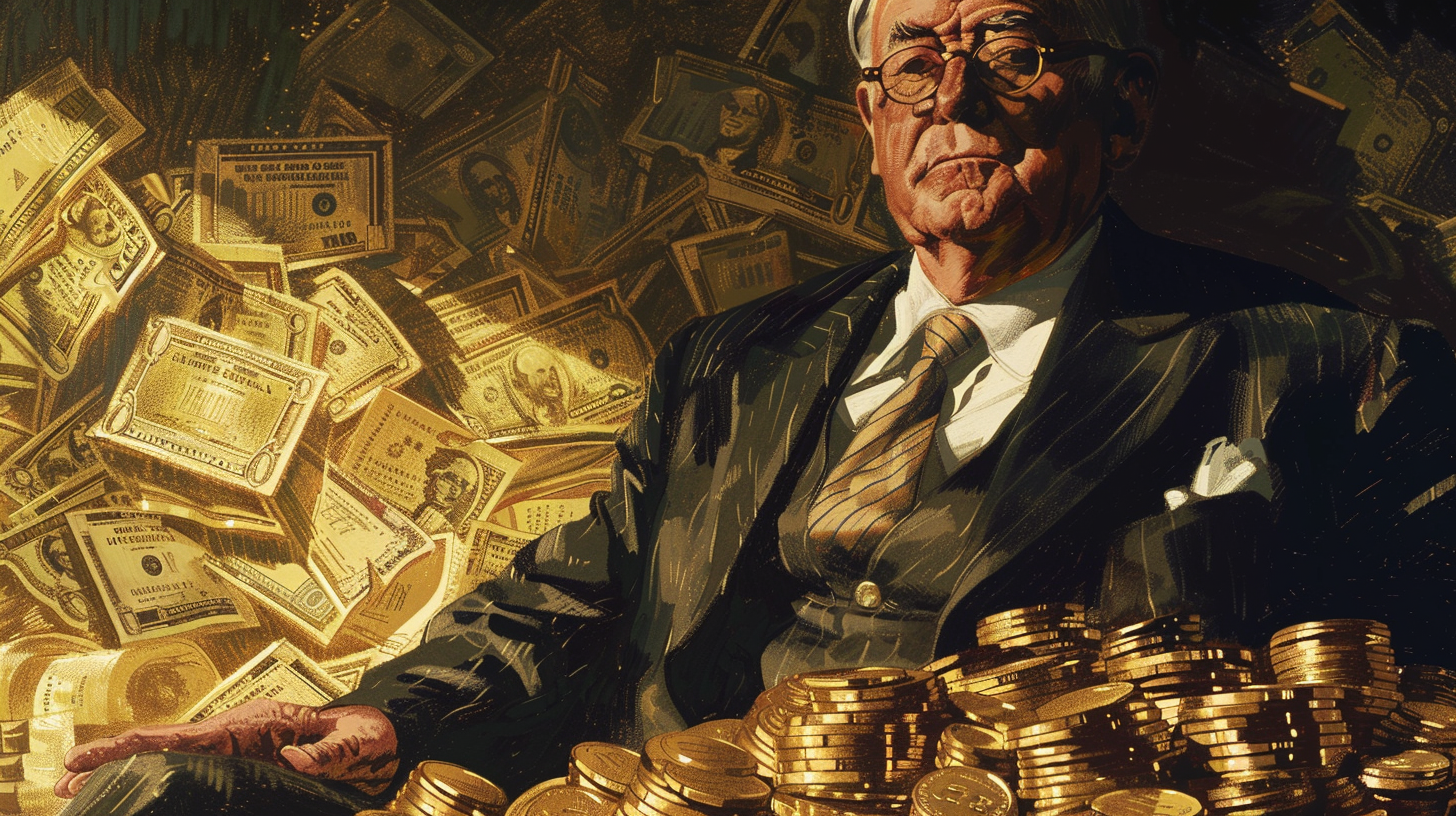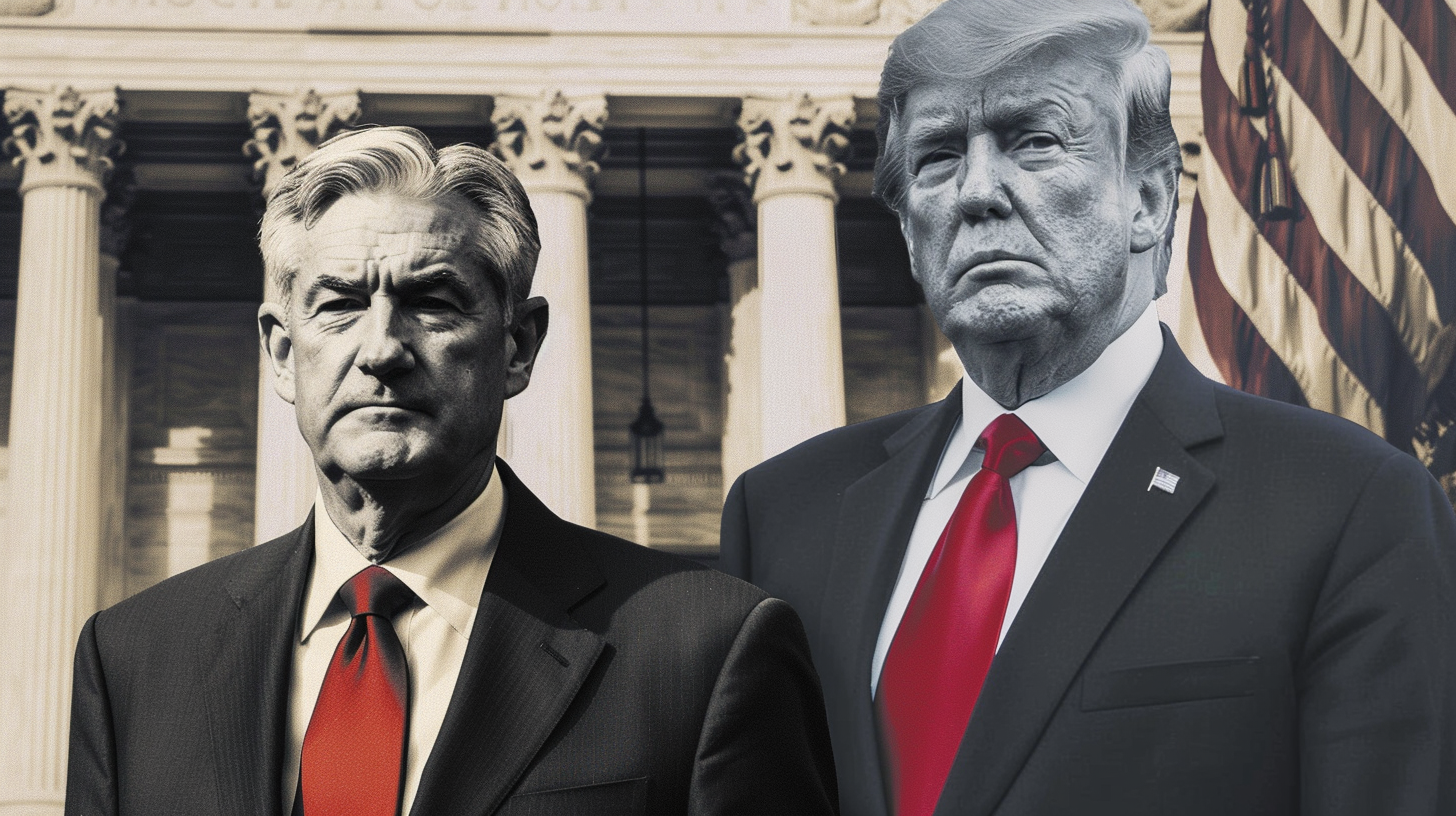The Story of Benjamin Strong: How Fatal Conceit Wrecks Economies
In an article we published last week, Peter Schmidt highlighted what he called the “fatal conceit” of modern Keynesian economics. These economists, central bankers and politicians think they can plan, direct and guide the economy through their great wisdom and application of their economic models. But as economist Friedrich Hayek explained, the central planners’ arrogance ignores the knowledge problem. No individuals or groups of individuals, no matter how many PhDs they have among them, possesses the knowledge necessary to foresee all of the consequences of a given policy.
As financial guru Jim Grant once put it, “We are the prisoners of the very dubious set of pseudo-scientific pretentions that are part of the people who manage our monetary affairs.”
In a follow up to his last article, Schmidt puts an exclamation point on this idea of fatal conceit, recounting the maneuverings of Benjamin Strong, New York Federal Reserve governor from 1914-1928.
![]()
The following was written by Peter Schmidt. Any views expressed are his own and do not necessarily reflect the views of Peter Schiff or SchiffGold.
The movie “Goodfellas” captures many of the details of the December 1978 robbery of the Lufthansa cargo terminal at New York’s Kennedy airport. One of the subtle details not fully developed was the robbery was only made possible because of the enormous gambling debts owed by a Lufthansa employee, Louis Werner, to a mob-connected bookmaker, Martin Krugman. In the movie, there is a scene where the robbery’s mastermind, James – “Jimmy the Gent” – Burke discusses killing Krugman. Burke asks his protégé, Henry Hill, “You think (Krugman) tells his wife everything?” Hill, who doesn’t want to see Krugman killed, responds, “You know him. He’s a nut job. He talks to everybody. You see his commercials, acting like a jerk. Nobody listens to what he says. Nobody cares what he says he talks so much.”
To a certain extent, Hill’s response concerning the bookmaker Martin Krugman is useful in evaluating the practical significance of the economist Paul Krugman. Because Paul Krugman talks so much, most people have long since stopped listening to him. Indeed, in my most recent post, “Paul Krugman, the Federal Reserve and the Fatal Conceit of Economics,” Paul Krugman was only discussed as someone who is thoroughly infected with the fatal conceit of economics. (Recall that the “fatal conceit” of modern economics is the belief the economy can be completely controlled by merely manipulating interest rates.) To be sure, as a Princeton professor and through his New York Times editorials Krugman is in a unique position to make his thoroughly bogus ideas heard. However, he is not in a policy-making position and, by that standard anyway, his ability to inflict damage on the US is somewhat limited.
Regrettably, any sort of limit on the Fed to cause damage via the “fatal conceit” of modern economics does not exist. In the brief discussion below, the most spectacular example of the fatal conceit of modern economics animating the Fed to cause enormous economic damage will be reviewed. This example involves a man named Benjamin Strong. This episode took place during the 1920s but should not be dismissed as irrelevant today. Strong was the governor of the Federal Reserve Bank of New York from 1914 until his death in 1928. In this position, Strong essentially – and singlehandedly – ran the Federal Reserve.
While many people believe war is some sort of great boon to any economy, the experience of England after WWI provides definitive evidence to the contrary. Well before American had entered the war on the side of the Allies, England had borrowed enormous amounts of money from American banks to purchase weapons from American companies. [i] With the war over, these debts needed to be repaid. However, because all the borrowed money had been used to build weapons and not to increase England’s productive capacity, there was essentially no way for England to repay its enormous war-debts – owed in dollars – to the United States.
Investors realized that England had greatly increased its money supply without increasing its productive capacity. As a result of this, the British pound plummeted in value. In February 1920, the pound dropped to a low of $3.18. The pre-war parity had been $4.8668 per pound. [ii] Strong and his counterpart at the Bank of England – a thoroughly incompetent, central-planner named Montagu Norman – then conspired to return the pound to its pre-war parity with the dollar. They resolved not to do this by working together to make the pound stronger; instead, they worked – in nearly total secrecy- to make the dollar weaker. They reasoned that if the dollar was made weaker, the pound would become stronger as a result.
Proof of this can be found in correspondence. For example, in May 1924, Strong told Treasury Secretary Andrew Mellon he was pursuing a “readjustment” to benefit England. The “readjustment” required Strong to pursue a policy of inflation in the United States and thus keep Britain from having to raise interest rates. Here is Strong in his own words,
…the burden of this readjustment must fall more largely upon us than upon them (Great Britain). It will be difficult politically and socially for the British Government and the Bank of England to face a price liquidation in England… in face of the fact that their trade is poor and they have over a million unemployed people receiving government aid.” [iii]
Later in October of 1924, Norman asked Strong to continue with this policy of low interest rates, or ‘easy money.’
You must continue with easy money and foreign loans and we must hold on tight until we know… what the policy of this country is to be.” [iv]
However, even all this was not enough to keep England solvent. As a result of her massive war debts – denominated as they were in dollars, not pounds – England’s position was hopeless. This hopeless position was further exacerbated by a national strike in May 1926. The strike began in Britain’s most important industry – coal. [v] British industry was already in dire straits and Strong recognized the strike made further actions to benefit England were necessary.
Strong then took the extraordinary action of calling a meeting of the world’s central bankers. The meeting was held in July 1927 on Long Island and had a single purpose – to coordinate a worldwide policy of “loose money” to advance the interests of England. The leaders of the central banks in France and Germany balked at the proposal, but Strong pursued a policy to benefit England with great vigor. The policy Strong implemented after the July 1927 meeting proved to be an enormous disaster and directly led to both the Great Depression and World War II. In fact, Adolph Miller of the Federal Reserve and a contemporary of Strong’s, called the 1927 credit expansion engineered to benefit the Bank of England, the “father and mother to the subsequent 1929 collapse.” [vi] This can clearly be seen in the chart below.

The chart plots two Fed fueled bubbles – the 1920s stock bubble fueled by Ben Strong and the 1990’s tech bubble fueled by Greenspan. In both cases, the bubbles were supercharged by the Fed actively interfering in the economy. [vii]
As described here using the example of Benjamin Strong, people everywhere would be much better off if the “fatal conceit” of modern economics was limited to the non-sequiturs and incoherent ramblings of the Paul Krugman’s of the world. Unfortunately – and as the Federal Reserve has demonstrated time and time again – the fatal conceit of modern economics continues to inspire the Fed, and lies at the root of all the enormous mistakes the Fed has made and will continue to make.
Peter Schmidt served six years in the Air Force and has spent the rest of his professional life in the petrochemical, oil refining and power generation industries. Peter has BS and MS degrees in mechanical engineering from Lehigh University and is a licensed professional engineer in California and Louisiana. Peter is finishing up his book, “Elites in Name Only – the Financial Crisis,” a comprehensive look at the people behind the 2008 financial crisis. He also runs the website the92ers.com, which provides an overview of the 50 people most responsible for causing the 2008 crash.
NOTES
[i] William Jennings Bryan, President Wilson’s secretary of state, strongly cautioned Wilson against allowing American banks to loan money to belligerents on either side. Bryant knew that once banker’s money was at stake in the outcome of the war, America would eventually be forced to enter the war to protect the bankers’ interests. This is exactly what happened. [ii] Benjamin Anderson, Economics and the Public Welfare, Liberty Press, Indianapolis, p. 171. In 1920, 1-oz of gold cost $20.67. At an exchange rate of $4.8668 per pound, the pound price of gold was about 4.25-pound per ounce of gold. Today it only takes $1.3 to equal 1-pound and the dollar price of gold is $1200 per ounce. Based on these conversions, it now takes 923-pounds to purchase the same ounce of gold that could be purchased for 4.25-pounds prior to WWI! In other words, the British pound is worth less than 1/200th of what is was worth one hundred years ago! [iii] Murray N. Rothbard, America’s Great Depression (5th edition), Mises Institute, Auburn, AL 2000 p. 147 [iv] Murray N. Rothbard, America’s Great Depression, p. 147-148 [v] Among the many problems facing the British coal industry were reparations “in kind.” These were reparations paid for by Germany in goods, not money. Among the largest of in-kind reparations were payments in coal, and much of this coal went to Italy and France. Italy and France had both been large export markets for British coal. The in kind reparations payments in coal highlight what a contradiction the Treaty of Versailles was with itself. Only a strong Germany could pay the reparations demanded by France, but France wanted a weak Germany. [vi] William Greider, Secrets of the Temple – How the Federal Reserve Runs the Country, Touchstone Books, New York, 1987, p. 297 [vii] October 1998 refers to the interest rate cut engineered by Alan Greenspan after the hedge fund LTCM collapsed. This interest rate cut – which occurred between regularly scheduled Fed meetings – gave speculators everywhere a green light to do almost anything and everything financially speaking. Note in particular how stocks soar higher immediately afterward. See the Dunce biography of Alan Greenspan for more details.Get Peter Schiff’s most important Gold headlines once per week – click here – for a free subscription to his exclusive weekly email updates.
Interested in learning how to buy gold and buy silver?
Call 1-888-GOLD-160 and speak with a Precious Metals Specialist today!





 Beneath the veneer of headline job gains, the American economy teeters on the brink: native employment dwindles as part-time and immigrant jobs surge. Government hiring camouflages looming recession warnings. Inflation and political blunders worsen the crisis, fueling public outrage at the establishment’s mishandling of the economy.
Beneath the veneer of headline job gains, the American economy teeters on the brink: native employment dwindles as part-time and immigrant jobs surge. Government hiring camouflages looming recession warnings. Inflation and political blunders worsen the crisis, fueling public outrage at the establishment’s mishandling of the economy. On April 5 1933, Franklin D. Roosevelt abandoned the gold standard, wielding questionable legal power amidst America’s dire economic depression. His whimsical approach to monetary policy, including coin flips and lucky numbers, unleashed unprecedented inflation and price increases that have since amounted to nearly 2500%. Our guest commentator explores this tragic history and the legacy […]
On April 5 1933, Franklin D. Roosevelt abandoned the gold standard, wielding questionable legal power amidst America’s dire economic depression. His whimsical approach to monetary policy, including coin flips and lucky numbers, unleashed unprecedented inflation and price increases that have since amounted to nearly 2500%. Our guest commentator explores this tragic history and the legacy […] Welcome to the world of modern economics where the term “inflation” no longer signifies the increase in the quantity of money, but has evolved into a plethora of buzzwords. From “shrinkflation” to “greedflation,” these new terms and semantic shifts are by no means harmless but a manipulation of popular sentiment. Von Mises said they play […]
Welcome to the world of modern economics where the term “inflation” no longer signifies the increase in the quantity of money, but has evolved into a plethora of buzzwords. From “shrinkflation” to “greedflation,” these new terms and semantic shifts are by no means harmless but a manipulation of popular sentiment. Von Mises said they play […] Assuming CPI measurements are not understatements, the dollar’s value has plummeted by a staggering one-fifth since 2020, yet, rather than acknowledging its role in fueling this economic turmoil, the Biden administration deflects, casting capitalism and corporate greed as the villains. The latest February CPI data show more signs of the upcoming inflation bloodbath.
Assuming CPI measurements are not understatements, the dollar’s value has plummeted by a staggering one-fifth since 2020, yet, rather than acknowledging its role in fueling this economic turmoil, the Biden administration deflects, casting capitalism and corporate greed as the villains. The latest February CPI data show more signs of the upcoming inflation bloodbath. The Federal Reserve is often viewed as a neutral guardian of the economy, tasked with safeguarding employment and ensuring stable prices. However, the Fed is run by individuals who, like anyone else, are swayed by certain motivations. Do the people behind the Fed truly have the incentive to remain impartial? Our guest commentator demystifies the […]
The Federal Reserve is often viewed as a neutral guardian of the economy, tasked with safeguarding employment and ensuring stable prices. However, the Fed is run by individuals who, like anyone else, are swayed by certain motivations. Do the people behind the Fed truly have the incentive to remain impartial? Our guest commentator demystifies the […]